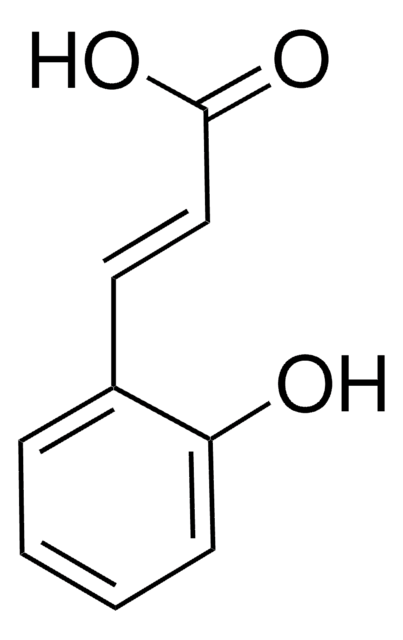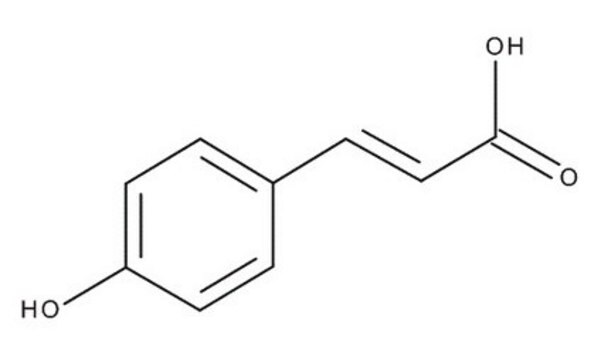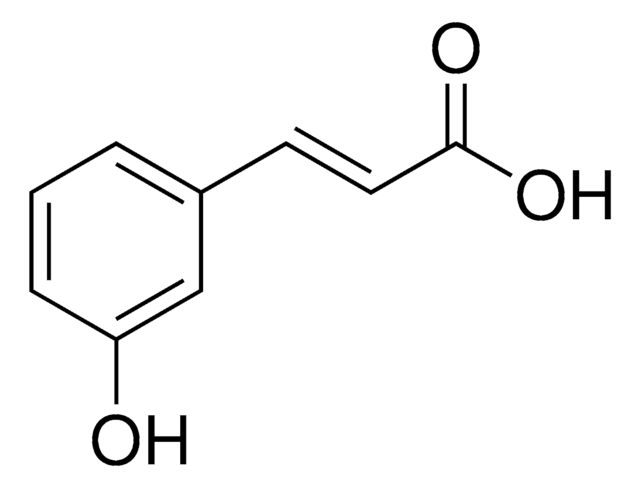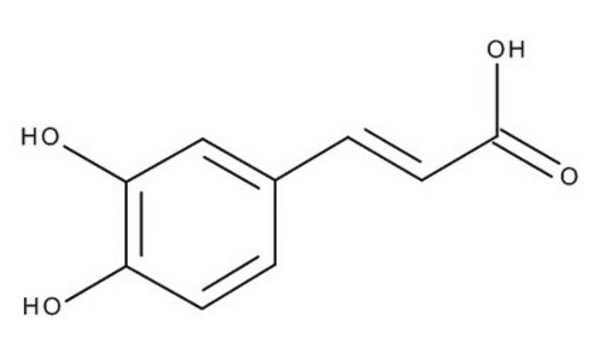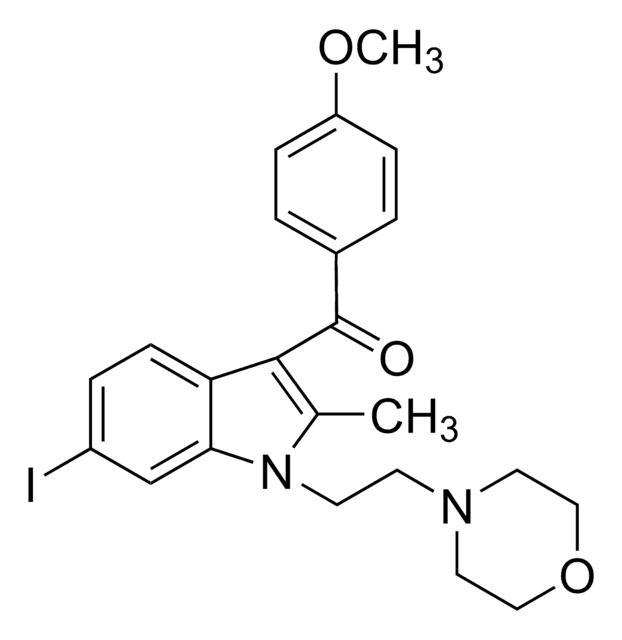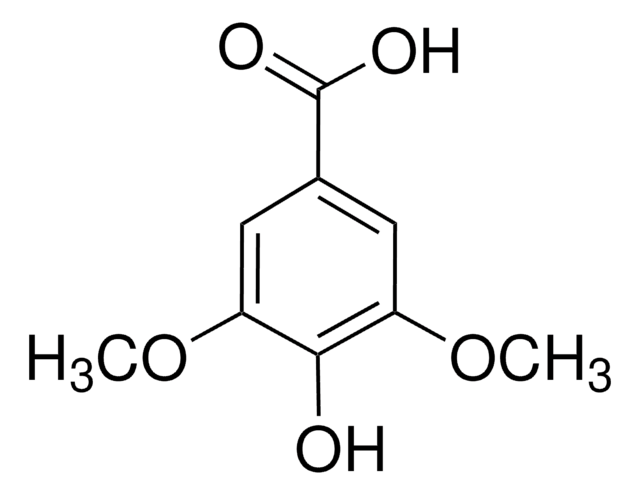全部照片(1)
About This Item
線性公式:
HOC6H4CH=CHCO2H
CAS號碼:
分子量::
164.16
Beilstein:
2084229
MDL號碼:
分類程式碼代碼:
12352100
PubChem物質ID:
NACRES:
NA.22
推薦產品
品質等級
化驗
99%
mp
193-195 °C (lit.)
SMILES 字串
OC(/C=C/C1=CC=CC(O)=C1)=O
InChI
1S/C9H8O3/c10-8-3-1-2-7(6-8)4-5-9(11)12/h1-6,10H,(H,11,12)/b5-4+
InChI 密鑰
KKSDGJDHHZEWEP-SNAWJCMRSA-N
尋找類似的產品? 前往 產品比較指南
訊號詞
Warning
危險聲明
危險分類
Eye Irrit. 2 - Skin Irrit. 2 - STOT SE 3
標靶器官
Respiratory system
儲存類別代碼
11 - Combustible Solids
水污染物質分類(WGK)
WGK 3
閃點(°F)
Not applicable
閃點(°C)
Not applicable
個人防護裝備
dust mask type N95 (US), Eyeshields, Gloves
客戶也查看了
Alexis Eugene et al.
Biotechnology for biofuels, 13(1), 202-202 (2020-12-12)
Arabinoxylan in grass cell walls is acylated to varying extents by ferulate and p-coumarate at the 5-hydroxy position of arabinosyl residues branching off the xylan backbone. Some of these hydroxycinnamate units may then become involved in cell wall radical coupling
J Cabanes et al.
Biochimica et biophysica acta, 790(2), 101-107 (1984-10-23)
The inhibition by m-coumaric acid of oxidation of L-dopa by epidermis tyrosinase (monophenol,dihydroxy-L-phenylalanine:oxygen oxidoreductase, EC 1.14.18.1) is characterized by a prolonged transient phase. Kinetic data correspond to that for a postulated mechanism that involves rapid formation of a reduced enzyme-m-coumaric
Seigo Baba et al.
Life sciences, 75(2), 165-178 (2004-05-04)
Rosmarinic acid (RA) is contained in various Lamiaceae herbs used commonly as culinary herbs. Although RA has various potent physiological actions, little is known on its bioavailability. We therefore investigated the absorption and metabolism of orally administered RA in rats.
Antonia Nostro et al.
Natural product research, 26(22), 2132-2136 (2011-10-22)
This study reported the antimicrobial activity and phenolic content of natural site and micropropagated Limonium avei (De Not.) Brullo & Erben inflorescences. The minimum inhibitory concentration (MIC) and minimum bactericidal concentration (MBC) of ethanolic extracts were determined according to the
Yutaka Konishi et al.
Journal of agricultural and food chemistry, 52(21), 6418-6424 (2004-10-14)
It was previously reported that m-coumaric acid, m-hydroxyphenylpropionic acid (mHPP), and 3,4-dihydroxyphenylpropionic acid (DHPP) are major metabolites of ingested caffeic acid formed by gut microflora and would be transported by the monocarboxylic acid transporter (MCT). We have directly measured their
我們的科學家團隊在所有研究領域都有豐富的經驗,包括生命科學、材料科學、化學合成、色譜、分析等.
聯絡技術服務